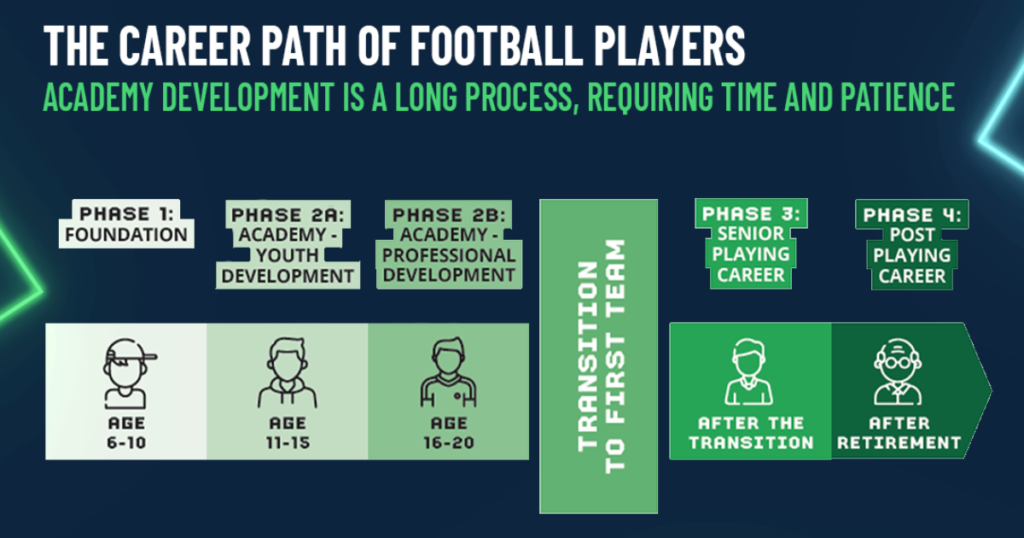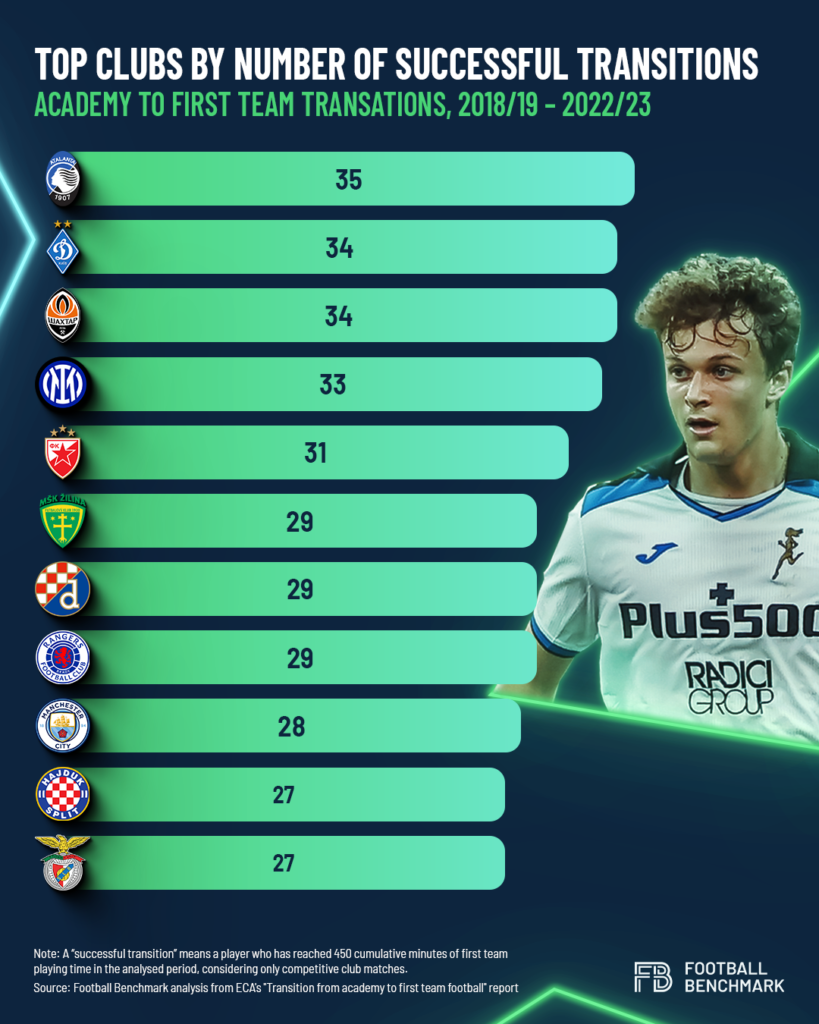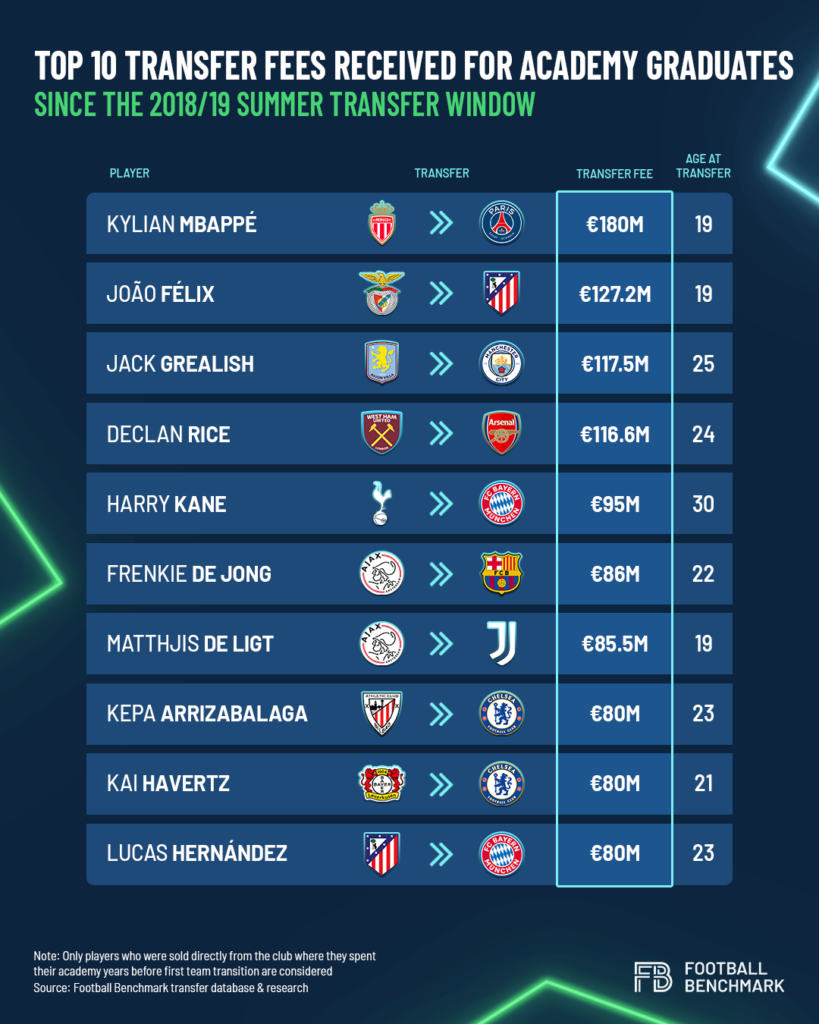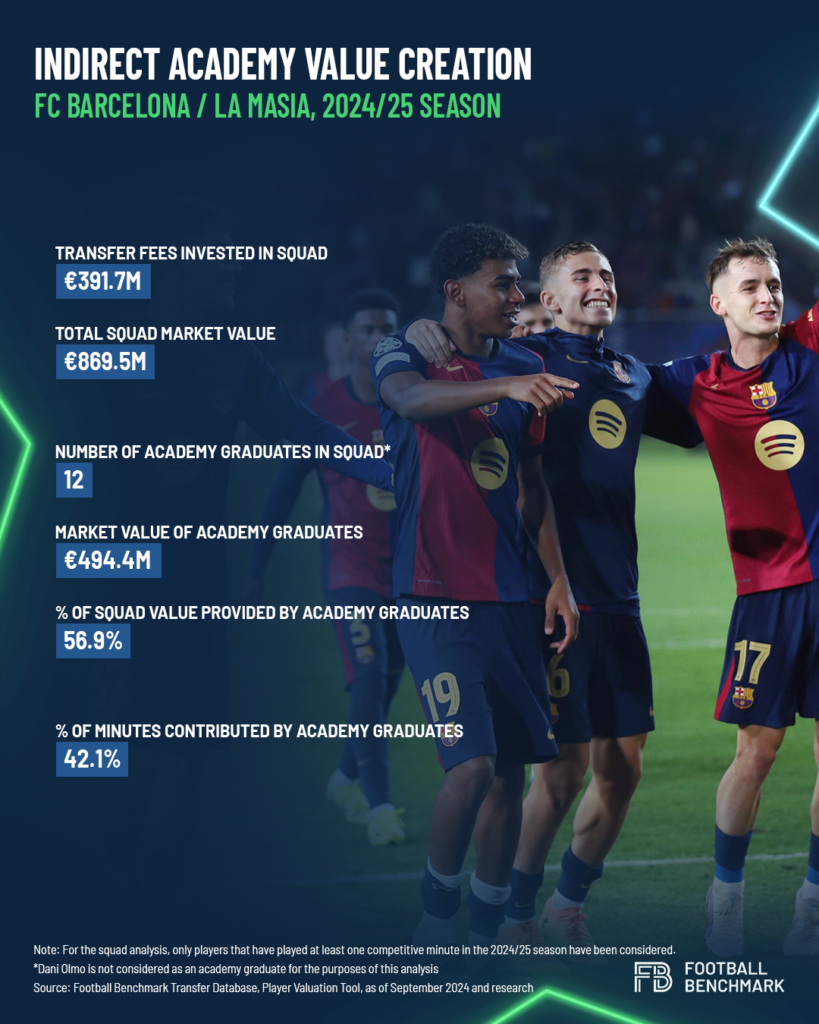The Business of Football Academies: How Clubs Create Value from Youth Development?
Key insights:– The evolution of Academy players: From “one-club” legends to strategic assets: Academy players are increasingly viewed as commodities rather than potential club legends, becoming integral components of financial strategies and accounting practices. Despite this shift, the role of academies is more significant than ever, as a well-executed youth development strategy can have substantial impact.– Tailoring the Academy vision to club context: There is no universally correct approach to academy development; the most suitable vision depends on each club’s […] L'articolo The Business of Football Academies: How Clubs Create Value from Youth Development? proviene da SFS.

Key insights:
– The evolution of Academy players: From “one-club” legends to strategic assets: Academy players are increasingly viewed as commodities rather than potential club legends, becoming integral components of financial strategies and accounting practices. Despite this shift, the role of academies is more significant than ever, as a well-executed youth development strategy can have substantial impact.
– Tailoring the Academy vision to club context: There is no universally correct approach to academy development; the most suitable vision depends on each club’s unique context and characteristics. For some clubs, the academy can serve as a cornerstone of the business model, while for others, reallocating academy budgets to alternative player development pathways may yield greater returns.
– Extracting value from direct sales or indirect savings: Value can be generated from academies either through direct player sales or indirect
savings on transfers and wages. However, realizing this value requires strategic planning. Each club’s unique circumstances should be thoroughly assessed before formulating a strategy, including a review of the academy’s current state and the creation of a detailed business plan.
The fabric of player development & club academies is woven through the history of football, from Manchester United’s Busby Babes to La Masia’s golden era, each contributing a chapter to the sport’s rich history and its overall long-term sustainability. From life lessons taught on the grass instead of the class, academies promote the importance of sports and community. Football clubs often act as extensions of their
regions, offering glimpses into local culture. For fans, seeing “one of their own” representing the club reinforces this bond, a narrative that captivates many. In this article, we explore the contemporary relevance of academies, where the primary goal of developing talent remains constant, yet their roles shift based on a club’s unique external and internal contexts. While some clubs rely on internal recruitment to bolster performance, others see their academy as a financial resource, helping them comply with financial sustainability regulations. These contrasting approaches reveal the multifaceted advantages academies offer to clubs seeking competitive edges. There is no one-size-fits-all approach; clubs must be attuned to global trends, strategic options, and methods for self-evaluation to identify the most suitable path forward. Football Benchmark is well-positioned to advise investors, clubs, leagues, national associations and international governing bodies in the development of youth talent strategies and the enhancement of academy operations. Additionally, we also provide data & intelligence services as part of Football Benchmark’s Youth Football Platform, the premier tool for benchmarking your club’s or players’ academy performance. In case you require guidance or would like to discuss any youth football topic, please do not hesitate to reach out.
WINDS OF CHANGE – THE CONTEXT BEHIND ACADEMIES BECOMING MORE PROMINENT
While the importance of academies is widely recognized within the global football ecosystem, their establishment must align with each club’s broader objectives. Across the football pyramid, various mechanisms promote productivity, investment, and ultimately, value. For clubs taking part in the youth development pathway, FIFA’s training compensation system offers incentive. This is essential funding for smaller clubs that take on nurturing roles before players move on to more advanced opportunities. Mid-sized clubs often integrate academies as strategic assets, with player sales subsidizing operational costs and embedding academies into their business models. Finally, for top clubs, academies provide an affordable means to fill squad positions while increasing the odds of discovering world-class talent. In recent years, however, clubs have faced new trends and incentives that could increasingly make youth development central to their strategies. The COVID-19 pandemic created a period in which internal recruitment became not just an option but a necessity as clubs tightened transfer budgets to mitigate losses. Financial sustainability regulations exert a similar influence by limiting external investments. Developing talent in-house allows clubs to offset financial burdens by selling academy graduates for pure profit while remaining within financial guidelines. In parallel, also driven by similar factors, there is increased competition in the market for external talent, underscored by the growing popularity of Multi-Club Ownership structures and an increasingly polarized market, dominated by a select few clubs. As the costs of securing top talent continue to climb and traditional methods for gaining a competitive edge diminish, successful academy development has become a viable and strategic alternative to costly external recruitment. Although academies now serve as only one stage in an extended, multifaceted development pathway, they continue to deliver substantial benefits.
A “HOLY GRAIL” OR A COMPLEX LONG-TERM VENTURE?
Despite their advantages, academies often represent costly investments with limited short-term impact on on-field success. Many European clubs contend with high costs and limited productivity from academies, alongside significant operational challenges. Brentford FC, for instance, closed its academy in 2016 due to the dominance of larger clubs in London, choosing instead to focus on recruiting young
players who were closer to first-team readiness. Operating an academy entails substantial initial investments and annual expenses dedicated to developing elite talent. Establishing a state-of-the-art training facility can cost EUR 20-30 million, followed by high recurring operational expenses. According to a 2020 UEFA report, clubs in Europe’s “Big Five” leagues spend an annual average of EUR 4.8 million on youth development, while top Premier League clubs often spend more than double this amount. Moreover, academy investments are inherently long-term, which can clash with the rapid pace of modern football, particularly given short coaching tenures and private equity investment timelines. A player’s development journey can begin as early as age six, with a full academy process spanning 10 to 15 years before producing a talent of significant value for the club.

The revenue side of academy operations is equally complex. While headlines often highlight major academy sales and associated accounting profits, each such sale is typically offset by dozens of minor transactions and complete write-offs. Given the unpredictable and varied career paths of players, revenue from academy sales is difficult and unreliable to forecast, often resulting in years of substantial losses before a few significant sales can balance the books. Moreover, as noted in a recent report co-authored by ECA and Football Benchmark on the first-team transition process, factors such as playing time opportunities, external influences, and even luck can play pivotal roles in a player’s progression, particularly in the final stages of development. These challenges are compounded if there are gaps in a club’s strategic vision or internal processes. The chart below highlights top European clubs by the number of successful first-team transitions, underscoring the potential impact of an effective academy strategy – whether in terms of sporting performance or as a cornerstone of sustainable club operations through financial value creation.

MULTIPLE WAYS OF GENERATING VALUE
In football, value is not merely a numeric or linear concept; understanding how it can be generated in academies, along with the key inflection points that drive player trading efforts, is essential. Contextual factors, such as the quality of a league, the reputation of the development club and its management, and major player milestones – like becoming a permanent starter, playing for the national team, or
competing in European club tournaments – can have a far greater impact on value than a lengthy development pathway. However, these milestones are often a direct outcome of the preceding developmental journey. Once value is generated, it can primarily be extracted in two ways: direct monetization and indirect sporting gains. Direct monetization occurs when clubs sell talented players in the transfer market, thereby financing operations and providing monetary resources, as well as generating accounting profits that support financial compliance. The visual below highlights the significant potential financial gains from selling academy graduates. Since the 2018/19 season, four of the twelve most expensive transfers have been academy graduates sold by their development clubs, each yielding over EUR 100 million in profit. While examples like Harry Kane and Declan Rice illustrate that clubs can achieve both sporting and financial returns from academy players, it is more typical for clubs to secure major transfer fees when players are between the ages of 19 and 23.

There is also a strong case for retaining academy graduates, as indirect value can be generated through cost savings on two fronts: (1) transfer fees that would otherwise be allocated for external acquisitions, and (2) wages, as external signings typically command higher salaries. Moreover, when cornerstone players emerge from within the academy, fan interest is often heightened, potentially boosting certain revenue streams, such as merchandise and ticket sales. The magnitude of these savings is often underestimated, especially among top
clubs. A prime example of the indirect impact of an academy is FC Barcelona’s La Masia. Following a turbulent financial period marked by significant losses (a cumulative EBIT of EUR -840 million between the 2020/21 and 2022/23 seasons) and exceptionally high staff costs, the current Barcelona squad is now largely composed of academy graduates. Approximately half of the squad hails from La Masia, including six of the starting eleven in the most recent El Clásico, convincingly won by the Blaugrana.

This academy-centric approach has had clear impacts. It has contributed to a favorable transfer balance, assisting the club in navigating La Liga’s stringent cost controls while also generating significant market value within the squad, as 56.9% of the squad’s value is attributed to La Masia graduates who have spent their entire professional careers with FC Barcelona. The landscape of youth development is undergoing significant transformation, necessitating strategic adaptation from stakeholders. Each club should carefully assess its unique circumstances before formulating a long-term strategy, which might include a thorough review of its academy’s current state and the development of a comprehensive business plan. While the era of ‘one-club’ players spending their entire careers at a single club may be waning, there remain numerous pathways to generate value through talent development.
L'articolo The Business of Football Academies: How Clubs Create Value from Youth Development? proviene da SFS.












































